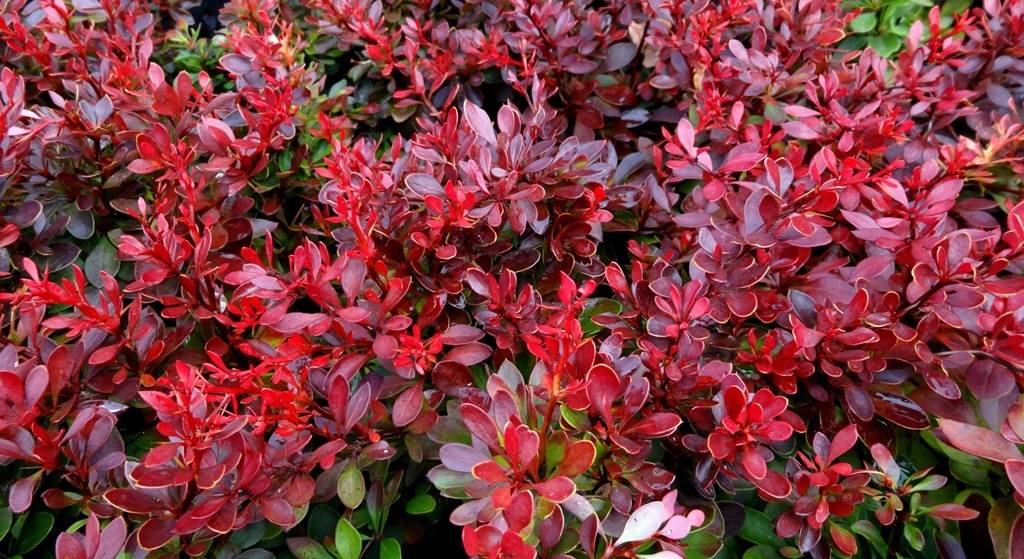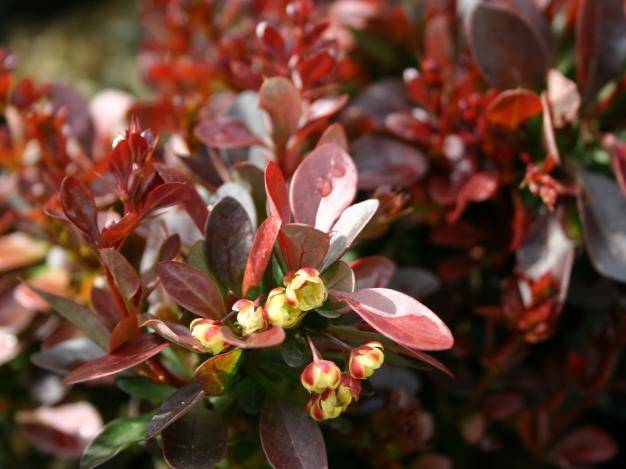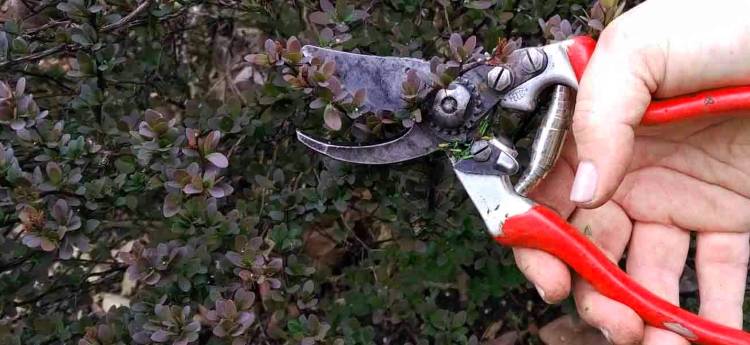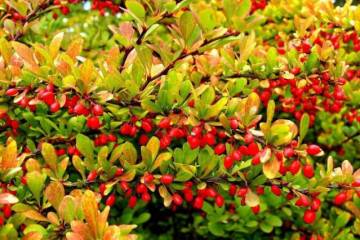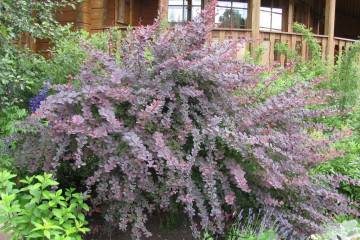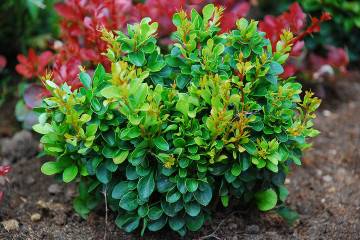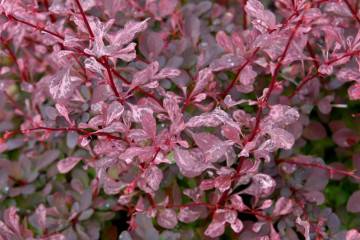Barberry Bagatelle - description, planting and care
Content:
Very often on the streets of the city you can see low bushes with small foliage of a chic burgundy color. This is the Thunberg barberry, and such a variety as Bagatelle is especially popular among gardeners and landscape designers because of its spectacular appearance and unpretentiousness.
Description of barberry Bagatelle
The variety is one of the smallest among barberries: the height of the bushes does not exceed 30-40 cm, and the branches spread out to a width of no more than 60 cm. The bush will grow for a relatively long time to its maximum size - 4-5 years.
Flowering occurs in late May-early June, fruits ripen in early autumn. Throughout the summer, the leaves are colored with a gradient from dark green to deep burgundy. In autumn, they take on a bright red hue.
How to fit Bagatelle correctly
Compared to many other ornamental shrubs, Bagatelle is not very demanding, however there are some points that must be observed in order for the plant to thrive in its new location. First of all, Bagatelle does not like wetlands and acidic soil. But he is not afraid of wind, shade and dry weather.
A potted seedling can be moved to an open flower bed any time from spring to autumn, but it is best to wait for cool weather for this.
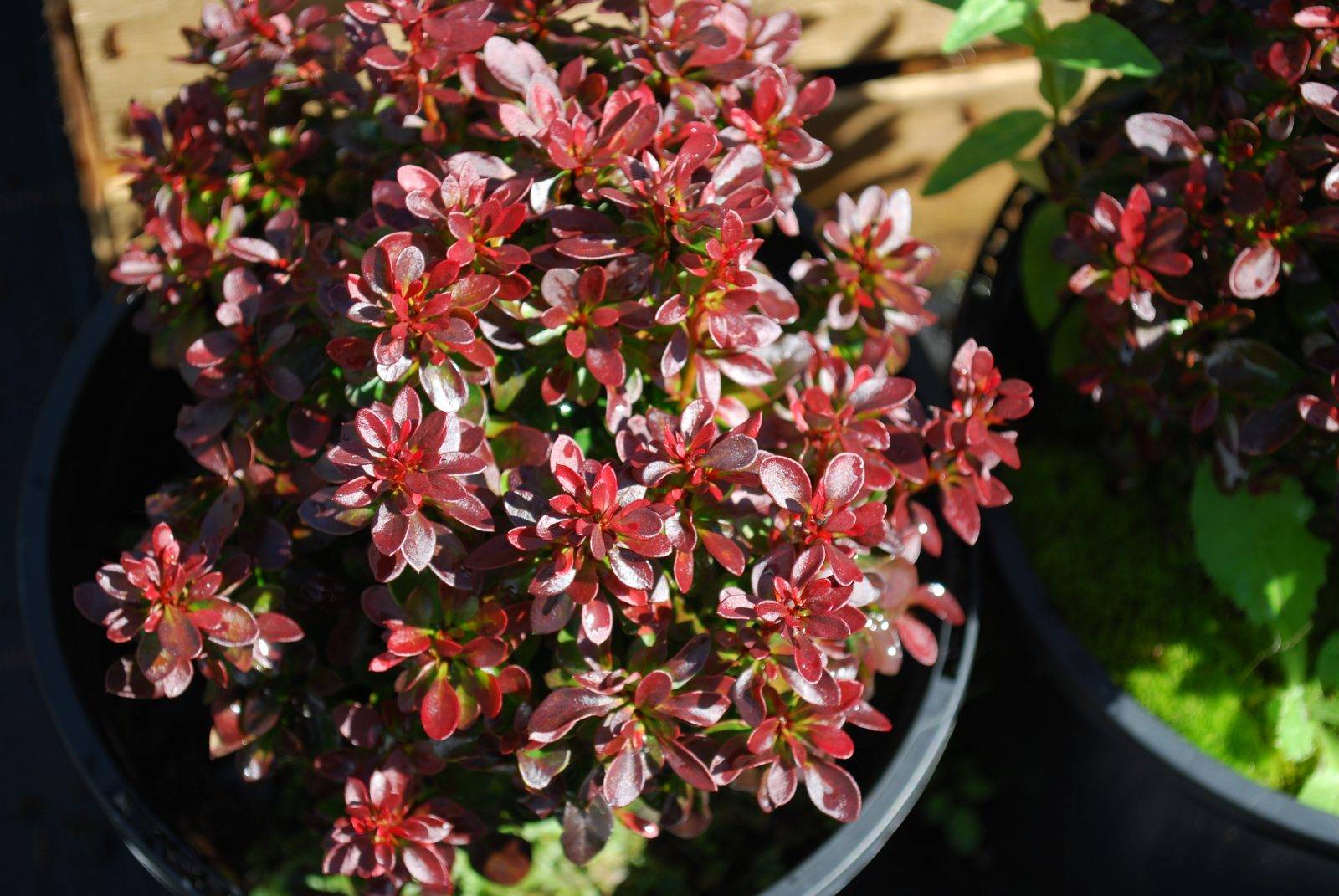
A plant purchased from a store can be transplanted at any time while maintaining an earthen coma (this method of transplanting is called transshipment)
The Bagatelle root system is designed in such a way that the plant can easily tolerate extended periods of dry weather. Excessive moisture can harm the barberry, so it should not be planted in heated areas, and drainage should be done when planting in clay soil.
A plant with open roots is planted only in early spring, while the buds have not yet blossomed. First, you need to prepare a hole - pour lime on the bottom, if the soil is acidic, with a second layer of a nutritious substrate (a mixture of turf soil, humus, peat and sand).
How to properly care for the Thunberg barberry Bagatelle
Since Bagatelle does not tolerate excessive soil moisture, its watering should be minimal. If the summer is rainy, you don't need to water the bush at all.
An adult plant should be fed once every 3-4 years as follows:
- in early spring, before the formation of leaves, nitrogen fertilizers are applied (30 g of urea per 10 l of water);
- in the summer - superphosphate;
- in the fall - potassium sulfate.
Pruning to shape for this variety is rarely done, but some branches should be removed regularly for sanitary purposes. Dry, improperly growing and diseased branches are harvested every spring. The shoots of the plant are dotted with long and sharp thorns, so gloves should be worn when pruning. For a newly planted plant up to 3-4 years old, molding pruning is not done at all.
The easiest way to form a spherical shape is to use an auxiliary structure. Planks are set around the bush so that they form a cube. Then some of the branches are cut according to the shape of this template. The resulting cube will have to cut off the resulting corners and round the resulting shape.
Breeding methods for barberry
There are a lot of breeding methods, but not all of them are effective. For example, propagation by root shoots may not give the desired result: very often this way "wilds" are obtained. Growing from seeds is a difficult and time-consuming process. It can take about three years before planting barberry in open ground. At the same time, the germination capacity of the seeds themselves is very low, as a rule, no more than 40%, moreover, stratification is required when propagating by seeds. Therefore, it is best to choose grafting or dividing the bush.
You can also resort to the formation of layers, however, due to the miniature of the plant itself, it is not very convenient to make them.
Cutting is carried out as follows:
- In the spring, before the buds open or in the fall, after the leaves have fallen, lignified branches 15-20 cm long are cut off at an angle of 45 degrees.
- The cut site is processed with any growth stimulant according to the instructions - "Heteroauxin", "Kornevin", "Zircon".
- Cuttings are planted in a container with specially prepared soil (fertile soil is poured on the bottom, and a mixture of peat with perlite or vermiculite on top, you can also use ordinary sand).
- The garden bed or container with cuttings is covered with foil.
You can also carry out propagation by summer cuttings, but according to the observations of gardeners, they take root worse. The cuttings should have 3-4 pairs of buds, the lower leaves should be removed. For rooting, cuttings, as in the first case, must be placed in a nutritious substrate. The result (the appearance of new sheets) should be noticeable in about a month.
The division of the bush must be carried out by completely digging it out of the ground. In no case should you chop up the plant, otherwise you can ruin it. The bush must be divided, carefully disassembling the roots, so that at least three shoots remain on each of the parts. Crushed charcoal should be applied to the roots in places of damage or cuts.
Pests and diseases, and how to deal with them
The most common disease of barberries is powdery mildew. It can be caused by excessive use of nitrogen fertilizers, as well as contamination from other nearby plants in the case of very dense planting. You can get rid of this disease with the help of a solution of colloidal sulfur or "Topaz"; at the initial stage, "Fitosporin" is suitable.
To combat caterpillars (moths), you can use Fitoverm.
This plant also has a "personal" attack - the barberry aphid. Its presence can be determined by withered or shriveled leaves. To prevent infection or get rid of the disease, the bush should be treated with soapy water, St. John's wort or tobacco.
How to help a plant survive the winter
Unlike many other representatives of the Thunberg barberry, Bagatelle is less frost-resistant, so it needs shelter. If winters in the region have little snow or severe frosts often occur after thaws, it is worth taking care of the covering material - spunbond or spruce paws. Even before the snow falls, cover the ground under the bush with straw or leaves.
A large amount of snow is also not always good for the plant: thin branches can break under the weight of the cover. In addition, under a thick layer of snow, the bush can overheat.
Bagatelle in landscape design
You can often find the use of Bagatelle as part of hedges or borders, in which case, decorative trimming is not always done to it.
Bagatelle goes well with ground cover low-growing plants and other low representatives of the Tunberga barberry species with green or yellow foliage, for example, the Goldalita variety. It will also look great with conifers and shrubs. Since Bagatelle is quite compact, it is well suited for rockeries.
Despite its small size, this barberry is quite suitable for a single planting (then you need to leave gaps of one and a half to two meters between the plants). In this case, you can make curly trimming to give it the shape of a ball.
Properties of Bagatelle fruit
Since the variety is decorative, you should not expect a rich harvest of fruits from it. The berries taste bitter, so you won't be able to use them in the same way as the fruits of ordinary barberry. But left on the bush, they can serve as food for birds.
Barberry Bagatelle is able to decorate any garden. Even beginner gardeners can handle the care of this plant. And another good feature of this representative of barberries - resistance to polluted air makes it a great option for decorating city streets and parks.
